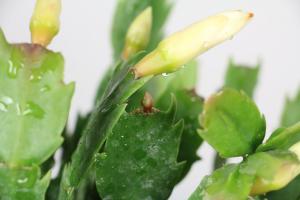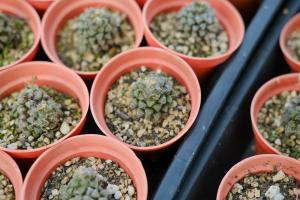Understanding Plant Bolting
Have you ever noticed your vegetable or herb plants suddenly growing tall and producing flowers? This phenomenon is known as bolting and can be a frustrating experience for gardeners. In this article, we鈥檒l explore what plant bolting means, why it happens, and what you can do to prevent or manage it.
What is Plant Bolting?
Plant bolting refers to the process in which a plant abruptly shifts its energy from producing leaves and stems to developing a flowering stalk. This usually results in tall and spindly plants with small leaves, and sometimes bitter-tasting fruits or vegetables. Bolting can occur in many types of plants, but it is particularly common in herbs and vegetables such as lettuce, celery, and broccoli.
Why Does Plant Bolting Happen?
While bolting may seem like a negative occurrence, it is actually a natural process that some plants need to go through in order to reproduce. When plants experience stress from factors such as hot or cold temperatures, lack of water, or inadequate nutrition, they may perceive the environment as unfavorable for their survival. In response, they trigger a genetic switch that initiates the bolting process as a way to produce flowers, set seeds, and ensure their survival.
How to Prevent or Manage Plant Bolting
The good news is that there are several ways to prevent or manage plant bolting. One effective strategy is to choose plant varieties that are less prone to bolting, such as slow-bolt lettuce or bolt-resistant broccoli. Another approach is to ensure that your plants are growing in ideal conditions, with proper soil moisture, nutrients, and temperature. This can be achieved through regular watering, fertilizing, and mulching.
If you notice that your plants are starting to bolt, you can also intervene by cutting off the flowering stalks or harvesting the leaves and stems before the plants go to seed. This can redirect the plant鈥檚 energy back to producing edible parts instead of flowers. However, keep in mind that once a plant has started to bolt, it may be difficult to reverse the process entirely.
Conclusion
Plant bolting can be a frustrating experience for gardeners, but it is a natural process that some plants undergo as a way to survive and reproduce. By understanding why bolting happens and how to prevent or manage it, you can help your plants stay healthy and productive throughout the growing season. Keep in mind that gardening is a learning process, and each season presents new challenges and opportunities to improve your skills.

 how many times do yo...
how many times do yo... how many planted tre...
how many planted tre... how many pine trees ...
how many pine trees ... how many pecan trees...
how many pecan trees... how many plants comp...
how many plants comp... how many plants can ...
how many plants can ... how many plants and ...
how many plants and ... how many pepper plan...
how many pepper plan...






























